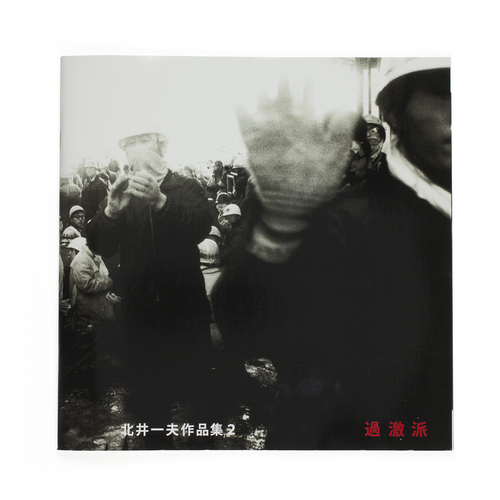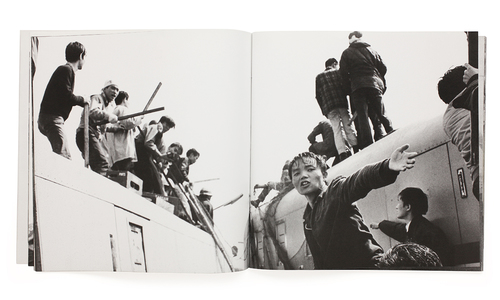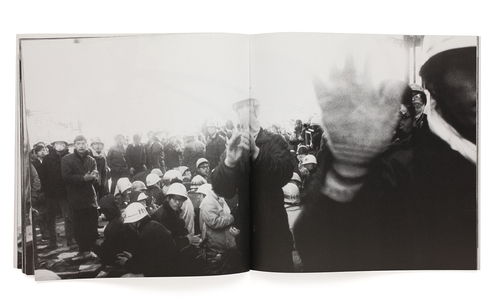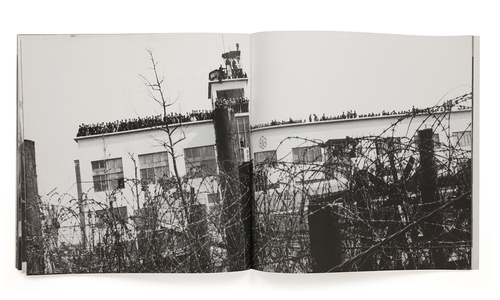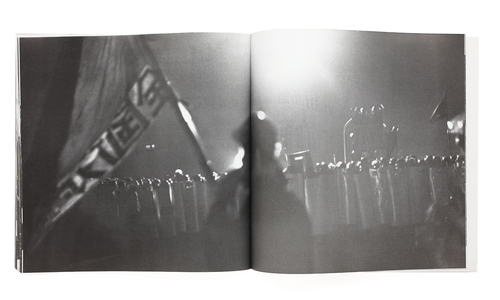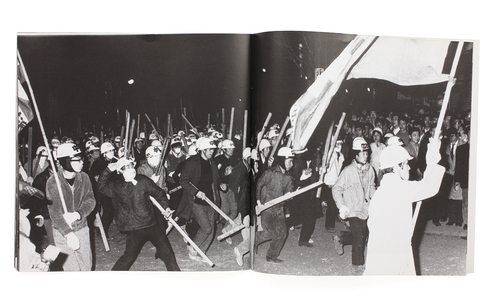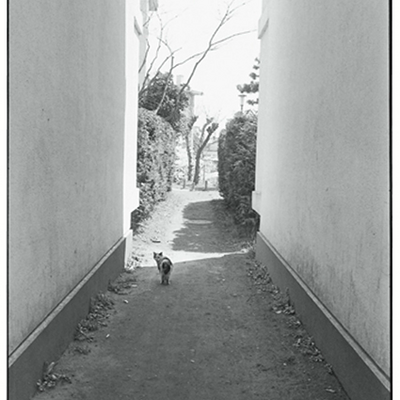
Agitators
Kazuo Kitai had dropped out of university just six months after entering the Photography course in the Art Department of Nihon University in Tokyo. As he puts it himself: "I didn`t listen to anything my teachers said". He had been living in Kobe, and even as a teenager used to visit the ateliers and exhibitions of the Gutai artists who are so celebrated nowadays. This was a chaotic era, with trouble fermenting in student and worker movements. The rebellious young Kitai had an idea to make a photo book inspired by french film of the early 1960s; to create a document combining the street demonstrations together with scenes of everyday life in the streets of the same city. He put everything into publishing that work, known as "Teiko" (Resistance). He intended to go on to publish a second book: "Kagekiha"("Agitators"in English)but Teiko failed to sell, leaving him broke. In disappointment he returned Kobe and photographed the Kobe dockers. His work in "Teiko" had already drawn the attention of the student protest leaders, who asked him to return to Tokyo and photograph for them the ongoing student and worker riots. And so began a 6-year involvement and documentation of the 1960s from the front line.
$17.80
- Book Size
- 295 x 295 mm
- Pages
- 64 pages, 38 images
- Binding
- softcover
- Publication Date
- 2012
